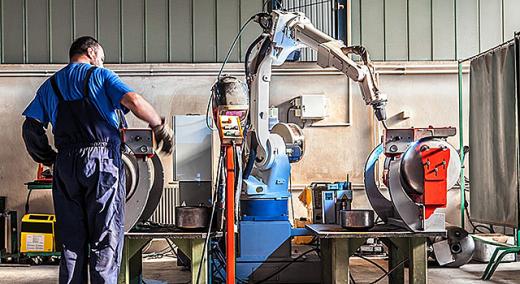Collaborative robots are increasingly attractive to manufacturers that require flexible solutions for their growing product mix but may not have the scale of work or capital resources needed to justify larger investments in automation systems.
|
ADVERTISEMENT |
These collaborative robots, commonly referred to as “cobots,” can execute tasks with minimal programming and adapt to variations in part position and size. Humans work side by side with cobots to reduce the need for custom fixturing that can make high-mix, low-volume (HMLV) work inefficient. Cobots can also go to where the work is on the shop floor.
…

Add new comment